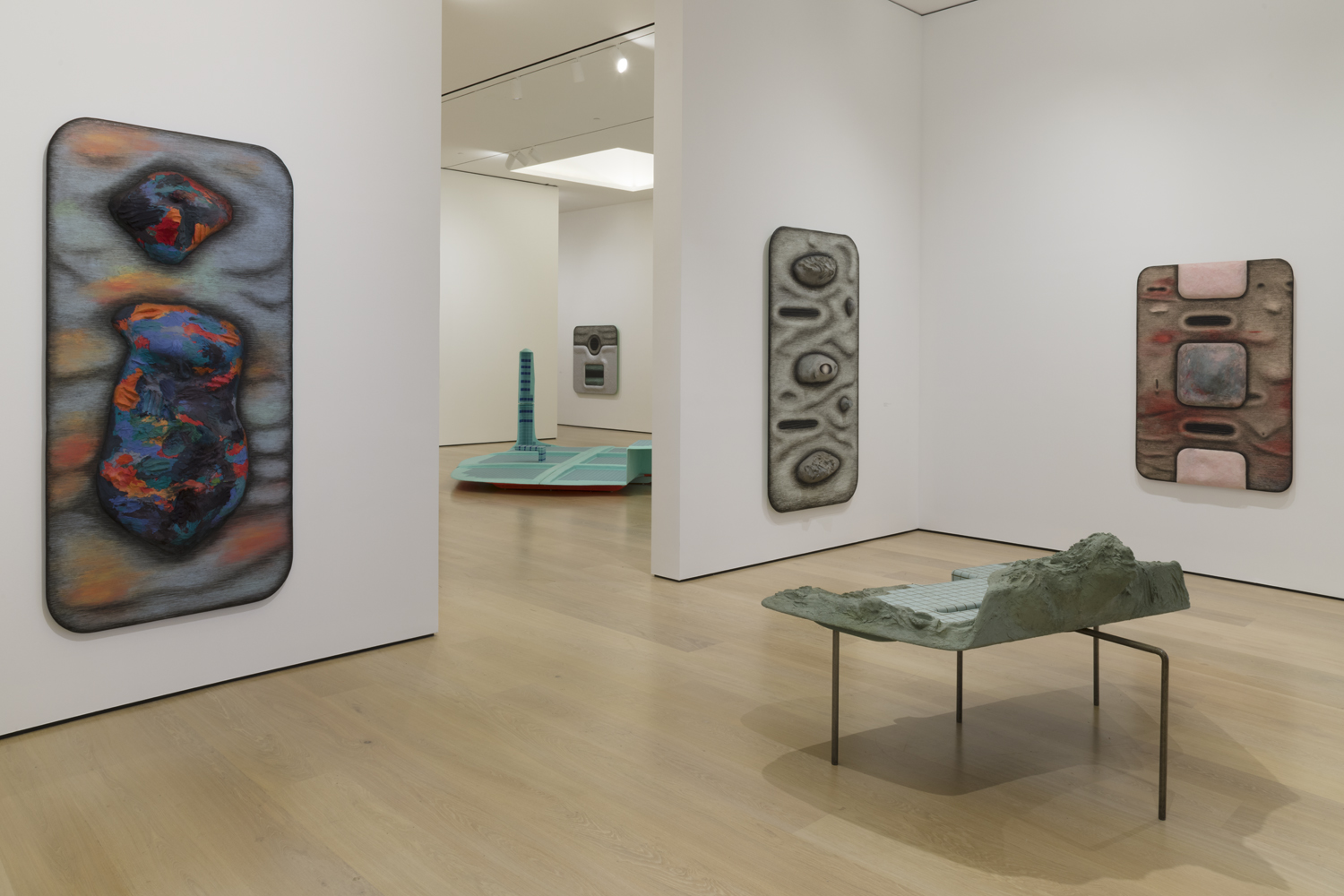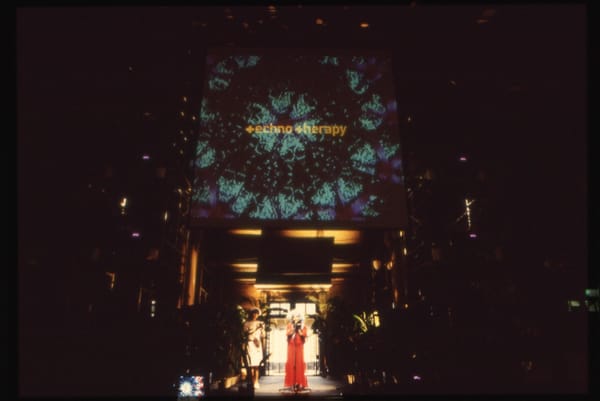Ideas
Free Association: Is It Amanaemonesia?


What is a “Liquid Circuit”? At Tishan Hsu’s show: orifices within a primordial flesh-colored sludge, contained within the rigid parameters of screen-shaped panels.
Conventional electronic circuits are built from rigid substances such as copper and silicon. The use of liquid metal alloys instead offers new possibilities for soft and deformable circuits, with applications in bio-integrated tech and soft robotics.

Look at Reflexive Ooze (1987) and calm down. Your brain glitches and tells you it’s a face. Computers and humans have this in common.
Maybe you are disturbed by the perspectival collapse of Auto-Immune (1988). Tiled clinical surfaces collide improbably like an operating theater reflected in a funhouse mirror.

In the 1960s, Joseph Weizenbaum created a program called ELIZA, a rudimentary chatbot designed to reflect the user’s input and ask follow-up questions. People couldn’t stop talking to it. Tech writer Pamela McCorduck, in this 99% Invisible episode on ELIZA, surmised that “we feel free to open ourselves to what we think is a nonjudgmental machine.”

Remember Tron (1982)? That film where Jeff Bridges gets stuck inside a computer and fights programs?
If you got stuck inside a software world with Caroline Polachek, it would look like this:

If you could dissolve and resurface in a post-human form, would you do it? In the second you stop to consider, 100 billion neurons fire within the circuitry of your skull.
“Free Association” is a glimpse into the chaotic mind of an ArtAsiaPacific editor, featuring a healthy sprinkling of fun facts and pop culture arcana.
“Amanaemonesia” was written by Chairlift (Caroline Polacheck, Patrick Wimberly) and appears on the album Something, Columbia Records / Young Turks, 2012.
All rights belong to their respective owners.
To read more of ArtAsiaPacific’s articles, visit our Digital Library.







